Introduction
Drupal and the Drupal marketplace have come a long way since its start on May 19, 2000. Today, the Drupal ecosystem is huge. It’s currently used by 4 percent of the top 1 million sites by traffic, which is 597,813 websites.
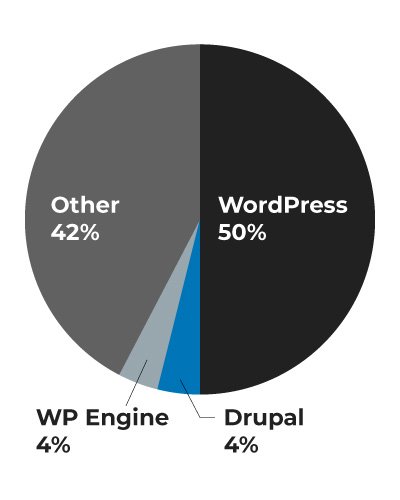 |
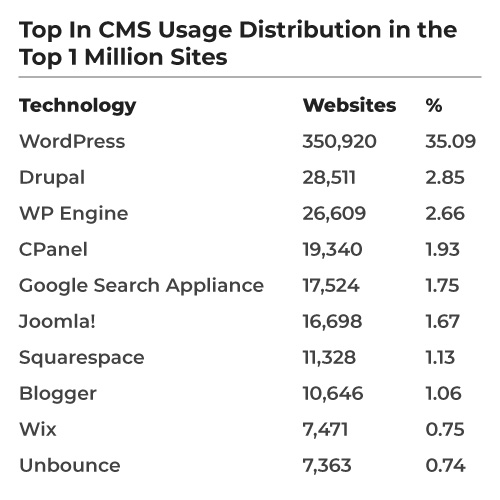 |
One thing is clear: Drupal is mature.
Here’s the Google Trends data for the search term “Drupal” seen over time. It looks like interest in Drupal is declining. But is that the whole picture?
We’ve been having several insightful conversations with community members over the last year, and one theme that has repeatedly emerged is that Drupal isn’t “cool” anymore, but that’s not necessarily a bad thing.
Drupal is big in the enterprise space for one reason.
Drupal may not be trendy, but it’s dependable. And the Fortune 100s of the world choose dependable over everything.
In the words of our team member Hussain Abbas, Engineering Manager at Axelerant: “Drupal is done being cool. Now, Drupal ticks a lot of checkboxes, which makes it relevant for large enterprise businesses.” Enterprise customers turn to Drupal when they are looking for a stable, mature and secure technology. |
Drupal is less resource intensive than other popular CMSs, and used to build websites that have to load quickly. This also makes it highly scalable. While it’s less user friendly than other CMSs, and more likely to require a dedicated development team to build, it is the most technically advanced among top CMSs. There’s a regular update cycle and an active community to help resolve challenges, eg. documentation, support forums and user groups.
Drupal is also highly customizable and part of a healthy ecosystem, with over 43,000 modules and 2,700 themes that site builders can use to extend their websites.
|
Comparisons between Drupal and other CMSs like WordPress tend to find that while WordPress is better suited to building a personal blog or small business website, Drupal is the strongest contender in the enterprise segment. Drupal allows for dynamic relationships between various data points and is best suited for sites that require a lot of customization. And according to builtwith.com, the closer you get to the top, the more websites are using Drupal. While Drupal is used by 2.85 percent of the top 1 million sites, the same figure is almost 10 percent for the top 10k sites. |
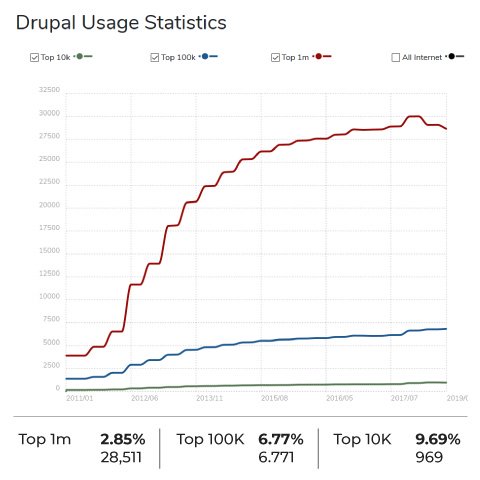 |
The Drupal community is large.
Each year, Dries Buytaert, founder of Drupal and co-founder of Acquia, examines the commit data from Drupal.org to understand who’s contributing to the project. In the latest edition, Dries considered data between July 1, 2017 and June 30, 2018. During this period, 7,287 individuals and 1,002 organizations contributed to Drupal.org from 123 different countries.
This matters, because it means that Drupal remains supported and keeps evolving as a technology.
The rise of decoupled tech offers Drupal a new advantage.
With efforts going on in the decoupled space, Drupal is all set to hold its own as the reliable mooring technology that allows technologies like React and Angular to run in the front-end.
All of this points to one thing.
The value of Drupal projects is growing.
This is visible in the numbers.
| The Drupal Business Survey 2018, conducted by Exove and OneShoe in partnership with the Drupal Association, among 136 Drupal agency leaders and decision makers worldwide, found that just over half of all respondents (51.5 percent) saw an increase in the average deal size of their projects. | 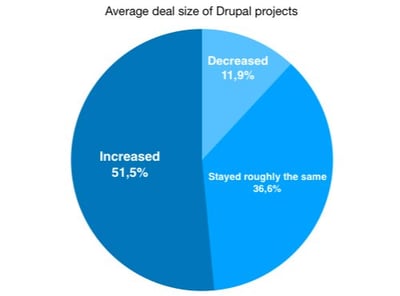 |
Source: Drupal Business Survey 2018
And Dries’ State of Drupal presentation from DrupalCon Nashville in April 2018 finds Drupal 8 picking up steam with 51 percent growth between April 2017 and April 2018.
Here are some of the responses to the Drupal Business Survey:
“We see larger and larger deals opening up in the Drupal space. The role played by Acquia is significant in the growth of Drupal in the Enterprise space.”
“We are still seeing growing demand for Drupal, especially among large/ enterprise organisations.”
And the industry is all set to grow.
In the 2018 edition of his annual retrospective on Acquia’s business momentum, Dries also puts together a list of factors indicating that the industry is thriving, and shares his belief that Acquia is positioned for long-term growth because of this. Here are some of the reasons he lists:
- The markets for content and digital experience management are growing rapidly. Digital experience and digital transformation are subjects that are vitally important for all organizations, impacting all levels of the value chain.
This is supported by findings from the research report “Digital Transformation Market by Technology (Cloud Computing, Big Data & Analytics, Mobility/Social Media, Cybersecurity, Artificial Intelligence), Deployment type, Business Function, Vertical (Retail, Education), and Region - Global Forecast to 2023”, published by MarketsandMarkets. The report forecasts that the global digital transformation (DX) market will grow from USD 290.0 billion in 2018 to USD 665.0 billion by 2023, at a compound annual growth rate (CAGR) of 18.1 percent during this period.
This is also corroborated by the report “Digital Transformation Market By Component Analysis; By Deployment Analysis; By End User Analysis; By Business type Analysis; By Vertical Analysis (BFSI, Telecom & IT, Healthcare, Automotive, Manufacturing, Academia & Research, Retail, Government) and By Regional Analysis – Global Forecast by 2018 - 2024” by Market Research Engine. This report finds that the global digital transformation market will exceed USD 650 billion by 2024, growing at a CAGR of over 18.5 percent in this period.
- Open source adoption continues to rise, having seen unprecedented growth in 2018.
- Cloud adoption is on the rise.
- Headless and decoupled content management are also growing.
- Conversational interfaces and augmented reality continue to grow.
All these factors points to an unhindered path forward ahead for digital agencies with a clear vision and the right support.
Finding sustainable talent in Drupal can be hard.
We see this reflected in the increasing costs and questions around Drupal rates, the steady increase of Drupal outsourcing as a viable option, and the increasingly difficult search to hire Drupal developers.
|
Talent is scarce and expensive. This is true of software development in general. But more so in Drupal. The Drupal Business Survey finds that recruitment concerns are top of mind for agencies (24 percent), followed by client acquisition (17 percent) and conversion to Drupal (14 percent). |
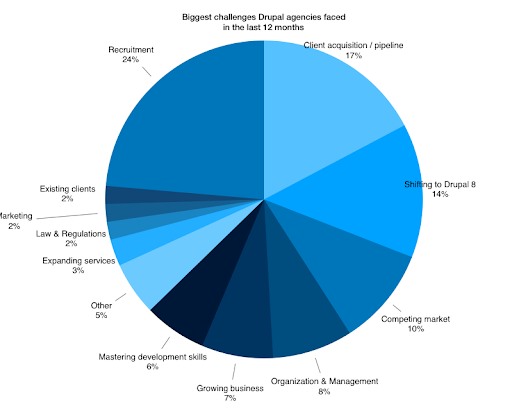 |
Source: Drupal Business Survey 2018
According to respondents:
‘We hit a productivity ceiling and need to expand if we were ever to have capacity to provide for further growth.’
‘We lose out on opportunities because our capacity is too low.’
‘Every year we hear that Drupal agencies can't find talent. What they often mean is that they can't find talent at the rates they are willing to pay.’
‘Most of the Drupal talent is either completely new to Drupal or already skilled and working, requiring a strong incentive to change positions.’
But this doesn’t mean that agencies can’t survive and even thrive in this space. Only that to do this, agencies have to work together.
The answer: grow together.
As we’ve said elsewhere, global agency partnerships are the new normal. And given how the ecosystem looks today, combining individual strengths and talent is the only way to viably expand.
We can’t talk about enterprise-level Drupal without talking about the leading Open Source digital experience company.
Acquia is the leader in delivering ambitious experiences through Open Source, surpassing USD 200 million in revenue in 2018.
Their focus on customer experience and product innovation is what helps their platform to stay ahead of the rest.
The Acquia partner network comprises extensive teams and structures, and is continuously growing across regions and domains. Partners like Acquia collaborate with Axelerant as integrated delivery partners to deliver bigger value, faster.
Acquia offers comprehensive support to its partners, in the form of community events; access to training, courses and certifications; roadshows, summits and conferences like Acquia Engage and Experience Acquia. All of this helps Acquia’s partners to grow pragmatically and sustainably.
Partnerships with capable Drupal agencies open new doors.
If you are a Drupal agency trying to make its mark in this competitive space, an agency partnership could be the thing to take you higher.
Partnerships are a way to gain valuable experience developing enterprise solutions and the confidence to handle projects of varying complexity, speed up turnaround time, and learn what works for customers. They add to your capabilities, growth, prospects, and confidence—helping you grow.
The future of Drupal is built on forging alliances.
Drupal’s key strengths are in the enterprise space, and agencies can't do it alone. Again, this is the future of the ecosystem. It’s a future where agencies and their partners have ample opportunities to flourish together, adding strength to strength to overcome challenges and stand out and deliver large transformations, at scale, with the best that Open Source has to offer.


 We respect your privacy. Your information is safe.
We respect your privacy. Your information is safe.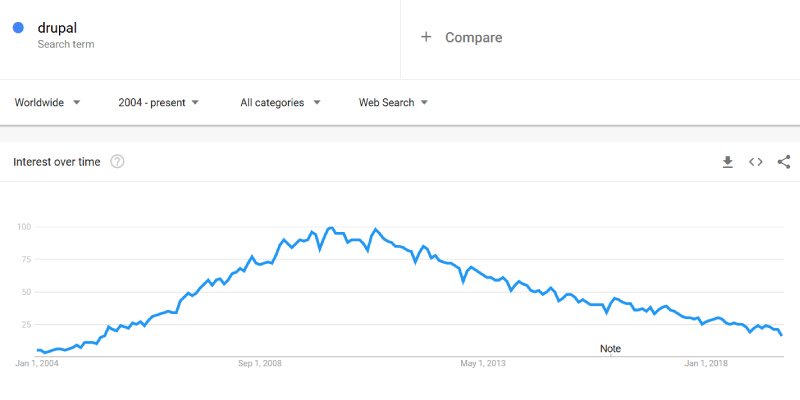
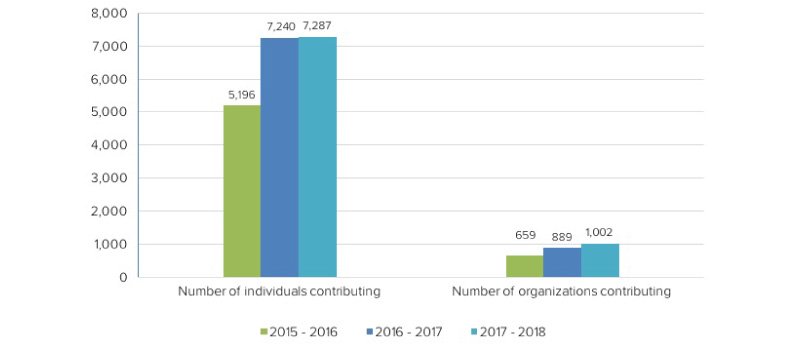
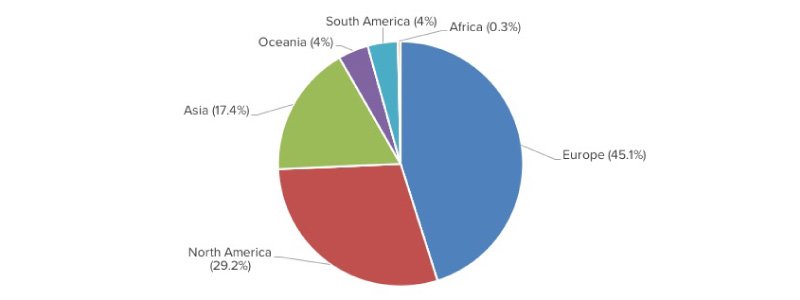
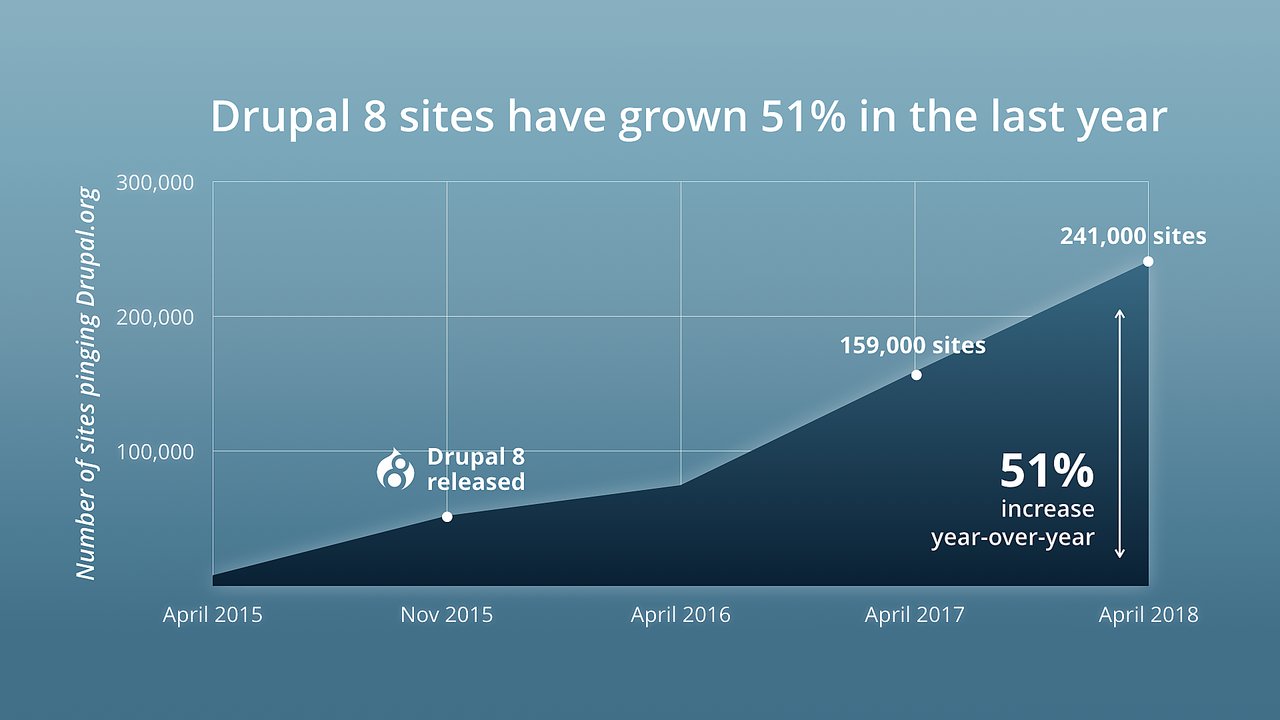
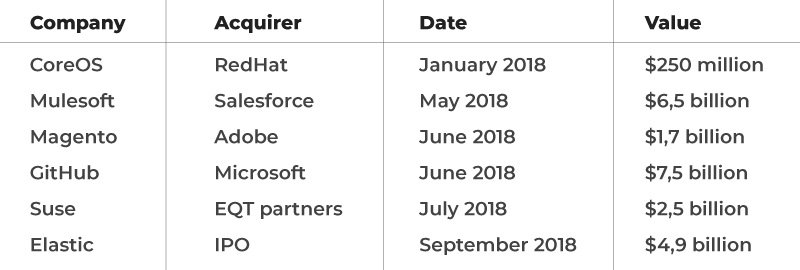






Leave us a comment